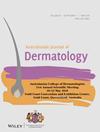#Acne: A Thematic Qualitative Analysis of Acne Content on TikTok
Abstract
Aim
TikTok has accrued over 3 million posts and 129 billion views under #acne, establishing itself as a popular platform amongst adolescents to access health information. We conducted an in-depth thematic analysis of acne videos on TikTok to determine how adolescents engage with acne content.
Methods
The top 150 consecutive videos under #acne on TikTok were subjected to rigorous qualitative analysis by experienced researchers (Laxmi Iyengar, Susan Saldanha) until data saturation was reached, guided by SRQR (Standards for Reporting Qualitative Research) guidelines. Five themes were identified:(1) Pimple popping, (2) Acne education, (3) ‘Acne transformation’ depicting treatment success stories, (4) Acne positivity, normalising acne and (5) Acne reality, capturing the lived experience of acne.
Results
Overall, the top 150 videos under #acne accumulated almost 2 billion views and 102 million followers. The majority of acne content was uploaded by females (125/150; 84%). Medically trained clinicians represented only 11% of the content (17/150). Pimple-popping videos attracted the most significant viewership (804 million views; 44%; 17% of content) despite having a lower proportion of content than acne education videos, uploaded by patients and clinicians (324 million views; 34% of content). These videos included dietary hacks, miracle cures and narratives that antagonised the medical treatments. Acne reality videos demonstrating the mental health burden of acne were the least popular amongst TikTok viewers (79 million views; 4% of content).
Conclusion
Thematic qualitative research of acne on TikTok bridges the gap between clinical expertise and the lived experiences of those navigating acne in the digital age. Based on the results of the study, strategies are proposed for dermatologists to engage in the TikTok platform on the topic of acne, including medicolegal precautions. Given the lack of content credibility on social media, this research urges dermatologists to redefine healthy skin care practices based on evidence-based principles.


 求助内容:
求助内容: 应助结果提醒方式:
应助结果提醒方式:


